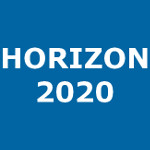A POD-NN methodology to determine in vivo mechanical properties of soft tissues. Application to human cornea deformed by Corvis ST test
Redaelli, Elena ; Calvo, Begoña (Universidad de Zaragoza) ; Rodríguez Matas, José Felix ; Luraghi, Giulia ; Grasa, Jorge (Universidad de Zaragoza)
Resumen: The interaction between optical and biomechanical properties of the corneal tissue is crucial for the eye’s ability to refract and focus light. The mechanical properties vary among individuals and can change over time due to factors such as eye growth, ageing, and diseases like keratoconus. Estimating these properties is crucial for diagnosing ocular conditions, improving surgical outcomes, and enhancing vision quality, especially given increasing life expectancies and societal demands. Current ex-vivo methods for evaluating corneal mechanical properties are limited and not patient-specific. This study aims to develop a model to estimate in real-time the mechanical properties of the corneal tissue in-vivo. It is composed both by a proof of concept and by a clinical application. Regarding the proof of concept, we used high-fidelity Fluid-Structure Interaction (FSI) simulations of Non-Contact Tonometry (NCT) with Corvis ST® (OCULUS, Wetzlar, Germany) device to create a large dataset of corneal deformation evolution. Proper Orthogonal Decomposition (POD) was applied to this dataset to identify principal modes of variation, resulting in a reduced-order model (ROM). We then trained a Neural Network (NN) using the reduced coefficients, intraocular pressure (IOP), and corneal geometry derived from Pentacam® (OCULUS, Wetzlar, Germany) elevation data to predict the mechanical properties of the corneal tissue. This methodology was then applied to a clinical case in which the mechanical properties of the corneal tissue are estimated based on Corvis ST results. Our method demonstrated the potential for real-time, in-vivo estimation of corneal biomechanics, offering a significant advancement over traditional approaches that require time-consuming numerical simulations. This model, being entirely data-driven, eliminates the need for complex inverse analyses, providing an efficient and accurate tool to be implemented directly in the Corvis ST device.
Idioma: Inglés
DOI: 10.1016/j.compbiomed.2025.109792
Año: 2025
Publicado en: Computers in biology and medicine 187 (2025), 109792 [18 pp.]
ISSN: 0010-4825
Financiación: info:eu-repo/grantAgreement/ES/DGA/T24-20R
Financiación: info:eu-repo/grantAgreement/EC/H2020/956720/EU/Opto-Biomechanical Eye Research Network/OBERON
Financiación: info:eu-repo/grantAgreement/ES/MICINN/PID2020-113822RB-C21
Tipo y forma: Article (PostPrint)
Área (Departamento): Área Mec.Med.Cont. y Teor.Est. (Dpto. Ingeniería Mecánica)
Fecha de embargo : 2026-02-11
Exportado de SIDERAL (2025-10-17-14:10:19)
Visitas y descargas
Idioma: Inglés
DOI: 10.1016/j.compbiomed.2025.109792
Año: 2025
Publicado en: Computers in biology and medicine 187 (2025), 109792 [18 pp.]
ISSN: 0010-4825
Financiación: info:eu-repo/grantAgreement/ES/DGA/T24-20R
Financiación: info:eu-repo/grantAgreement/EC/H2020/956720/EU/Opto-Biomechanical Eye Research Network/OBERON
Financiación: info:eu-repo/grantAgreement/ES/MICINN/PID2020-113822RB-C21
Tipo y forma: Article (PostPrint)
Área (Departamento): Área Mec.Med.Cont. y Teor.Est. (Dpto. Ingeniería Mecánica)
Fecha de embargo : 2026-02-11
Exportado de SIDERAL (2025-10-17-14:10:19)
Permalink:
Visitas y descargas
Este artículo se encuentra en las siguientes colecciones:
articulos > articulos-por-area > mec._de_medios_continuos_y_teor._de_estructuras
Notice créée le 2025-03-07, modifiée le 2025-10-17
